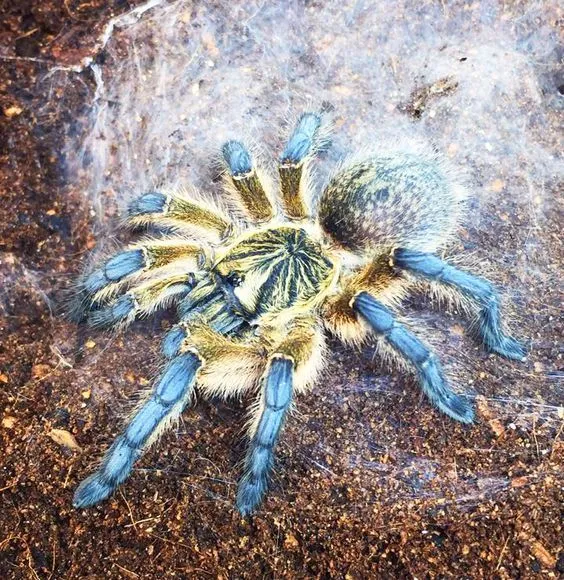What Makes a Tarantula a Tarantula
Tarantulas, those large and often hairy arachnids, are a source of both fascination and fear. With their imposing size and sometimes intimidating appearance, many people wonder if they are poisonous. The term “poisonous” is often mistakenly used when referring to venomous creatures like tarantulas. In reality, the question isn’t whether they’re poisonous, but whether they’re venomous and what effects their venom has. Understanding the difference between venom and poison is crucial; poison is ingested or absorbed, while venom is injected. Tarantulas use venom to subdue their prey, but its effects on humans can be quite different. They belong to the Theraphosidae family and are known for their impressive size, with some species having a leg span of over 10 inches. These creatures are found in various habitats, from tropical rainforests to deserts, and their lifestyle and behaviors are just as diverse as their environments.
Tarantula Venom Facts vs Myths
One of the most common myths surrounding tarantulas is the perceived danger of their venom. Contrary to popular belief, tarantula venom is generally not considered life-threatening to humans. The venom is primarily designed to incapacitate small prey like insects, other arachnids, and occasionally small vertebrates. While a tarantula bite can be painful, the effects are usually localized and mild. Myths often exaggerate the severity of the bite, leading to unnecessary fear. It’s important to separate fact from fiction, as the actual impact of a tarantula bite is often less severe than portrayed in movies or folklore. The reality is that most bites result in symptoms similar to a bee sting, with some pain, redness, and swelling at the bite site. Rarely, a person might experience more severe reactions, but this is not the norm.
Tarantula Venom Composition

Tarantula venom is a complex mixture of proteins, enzymes, and other substances. The exact composition varies from species to species, but it generally includes compounds designed to paralyze or kill prey. The venom acts primarily on the nervous system, disrupting nerve function and causing paralysis. Enzymes in the venom can also break down tissues, aiding in the digestion of the prey. The potency of the venom is generally not very high compared to that of other venomous animals. Research into tarantula venom has also revealed potential medical applications, as some of its components may have properties that could be useful in developing new drugs.
The Impact of a Tarantula Bite on Humans
The impact of a tarantula bite on humans is typically less severe than many people assume. While the bite itself can be painful due to the size of the fangs and the injection of venom, the effects are usually localized. Most individuals will experience symptoms similar to those of a bee sting—pain, redness, and swelling around the bite site. The duration of these symptoms is usually short, lasting only a few hours to a day or two. Serious reactions are rare, but allergic reactions can occur in sensitive individuals. In such cases, symptoms may include difficulty breathing, dizziness, or a rapid heartbeat. These more severe reactions necessitate immediate medical attention. The size and species of the tarantula also play a role, with larger species potentially delivering more venom.
Common Symptoms After a Tarantula Bite
The most common symptoms after a tarantula bite include localized pain, which can range from a mild sting to a more intense discomfort. Redness and swelling around the bite area are also typical, resulting from the body’s inflammatory response to the venom. Other possible symptoms include itching, muscle cramps, and in rare cases, nausea or vomiting. The severity of symptoms depends on several factors, including the species of tarantula, the amount of venom injected, and the individual’s sensitivity. The majority of bites are not life-threatening, and symptoms usually subside within a few days. However, it is always wise to monitor the bite site and seek medical advice if symptoms worsen or if there are signs of an allergic reaction.
Tarantula Defensive Strategies

Tarantulas have evolved several defensive strategies to protect themselves from predators. Besides their venom, these spiders use a combination of physical and behavioral tactics to deter threats. One primary defense mechanism is the use of urticating hairs, which are tiny, barbed hairs located on their abdomen. When threatened, tarantulas flick these hairs towards the perceived threat, causing intense irritation. The hairs can penetrate the skin and eyes, causing itching, burning, and discomfort. Moreover, tarantulas often exhibit a defensive posture, rearing up on their hind legs and displaying their fangs to appear more intimidating. They may also hiss or make other sounds to startle predators. Finally, their camouflage and ability to hide in burrows or under rocks offer additional protection.
The Role of Fangs and Venom
The fangs of a tarantula are primarily used to inject venom into its prey. These sharp, downward-pointing structures are also used for defense against predators. The size of the fangs varies depending on the species, with some tarantulas having fangs that can reach up to an inch in length. When a tarantula bites, it uses its fangs to pierce the skin and inject venom. The venom then begins to work, paralyzing the prey, making it easier for the spider to consume it. The venom’s primary purpose is for hunting, and its composition is optimized for this purpose. However, the venom’s effectiveness also depends on the size and type of the prey. In humans, the fangs and venom can cause pain and localized reactions, but severe reactions are rare.
How Effective Is Tarantula Venom?
Tarantula venom is highly effective at subduing its intended prey. However, its effectiveness varies based on the species of tarantula and the type of prey it targets. For insects and small invertebrates, the venom quickly immobilizes and often kills. The venom works by targeting the nervous system, disrupting nerve function and causing paralysis. Although the venom is effective, the amount injected is relatively small. In humans, the venom’s effects are significantly less pronounced, often causing only localized pain, redness, and swelling. While tarantulas possess venom, it is not particularly potent when compared to other venomous creatures. The primary purpose of the venom is to aid in hunting, not to defend against large predators. The relatively mild effects on humans reflect this evolutionary adaptation.
Tarantula’s Diet and its Relation to Venom

The diet of a tarantula consists primarily of insects, other arachnids, and occasionally small vertebrates such as mice or lizards. The type of prey influences the effectiveness and composition of the venom. Tarantulas that primarily hunt insects have venom adapted to quickly incapacitate their common prey. The venom is designed to paralyze or kill these smaller creatures, making them easier to handle and consume. As tarantulas grow, their diet may expand to include larger prey, and their venom may reflect these changes. The tarantula’s hunting strategy also affects its diet. Some species are ambush predators, waiting patiently for their prey to come within striking distance. Others actively hunt, stalking and pursuing their food. Both the venom and the hunting strategy are essential for the tarantula’s survival.
Is There a Way to Prevent Tarantula Bites?
Preventing tarantula bites involves several precautions, especially for those who keep tarantulas as pets or work in environments where they may be present. The most important thing is to avoid handling tarantulas unnecessarily. Tarantulas are generally docile, but they will bite if they feel threatened. Always handle them with care, and avoid sudden movements that might startle them. When cleaning their enclosure or performing maintenance, wear appropriate protective gear, such as gloves, to minimize the risk of contact. When encountering a tarantula in the wild, observe it from a safe distance, and do not attempt to handle it. Education is also key. Understanding tarantula behavior and recognizing signs of stress, such as a defensive posture or the flicking of urticating hairs, can help avoid potential bites. Always supervise children, teaching them to respect these creatures and avoid provoking them.
What to Do If You Are Bitten by a Tarantula
If you are bitten by a tarantula, it’s important to remain calm and follow these steps. First, clean the bite site thoroughly with soap and water to prevent infection. Apply a cold compress to the area to reduce pain and swelling. Monitor the bite for any signs of an allergic reaction, such as difficulty breathing, swelling of the face or throat, or a rapid heartbeat. If any of these symptoms occur, seek immediate medical attention. Most tarantula bites are not serious, and the symptoms can be managed with over-the-counter pain relievers and antihistamines. However, it’s always wise to seek medical advice, especially if you’re uncertain about the severity of the bite or if symptoms worsen. It is also important to identify the species of tarantula, if possible, to help medical professionals understand the potential effects of the venom.
Treatment and First Aid for Tarantula Bites

Treatment for a tarantula bite focuses on alleviating the symptoms and preventing secondary complications. Basic first aid includes cleaning the wound with soap and water and applying a cold compress to reduce pain and swelling. Over-the-counter pain relievers, such as ibuprofen or acetaminophen, can help manage the pain. Antihistamines may be used to reduce itching and inflammation. If there are signs of an allergic reaction, such as difficulty breathing or swelling, seek immediate medical attention. In rare cases, a doctor may prescribe stronger medications, such as corticosteroids, to reduce inflammation. It is crucial to keep the bite site clean to prevent infection, and monitor for any signs of worsening symptoms. Most tarantula bites heal within a few days with proper care.
Amazing Facts About Tarantulas
Tarantulas are fascinating creatures with many amazing characteristics. They can live for a very long time, with some females living for over 20 years. They are also incredibly diverse, with hundreds of different species found worldwide. They have unique methods for catching prey. Many species ambush their prey in burrows, while others actively hunt. Tarantulas also have unique defense mechanisms, like the urticating hairs mentioned earlier. These hairs are a form of defense, causing intense irritation to deter predators. Tarantulas are also excellent climbers, with some species able to scale glass. They play an important role in their ecosystems, controlling insect populations and serving as prey for larger animals. The study of tarantulas offers a rich field for understanding animal behavior, venom, and the complex interactions within their environments. Their resilience and adaptability are a testament to the power of evolution.
